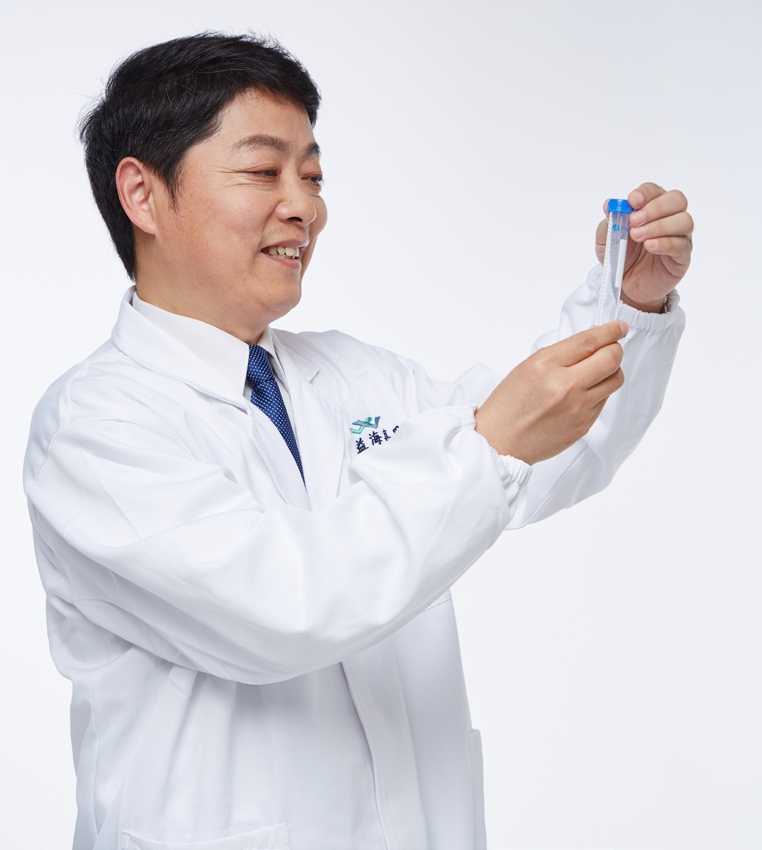徐学兵:男,教授,博士生导师,上海市白玉兰纪念奖获得者,全国粮油优秀科技工作者,主要从事脂质科学与技术、酶工程、食品功能学、食品添加剂、食品纳米技术、生物催化、生物能源等研究,且走在了国际前列。现任益海嘉里金龙鱼旗下的丰益(上海)生物技术研发中心有限公司总经理、益海嘉里集团研发中心总监。
先后承担多项粮油食品科研课题研究,成功解决多项行业技术难题,创造了巨大经济和社会效益,科研成果多次被评为国际领先、国际先进水平。曾获2013 年中国粮油学会科学技术奖一等奖;2015年中国粮油学会全国粮油优秀科技工作者; 2017 年欧洲脂质技术奖;2018 年美国油脂化学家学会(AOCS)Fellow;2019 年美国油脂化学家学会(AOCS)“张驷祥奖”;2019 年中国粮油学会科学技术奖特等奖等。合著发表300 余篇科研论文,编著教材和著作4 部,拥有发明专利50 余项。
担任国内外多所院校的荣誉、客座或兼职教授,先后在多种国际学术期刊担任主编或编委,如《美国油脂化学家学会志》(JAOCS)副主编等,也是本刊《粮油食品科技》第四届编委会成员。先后多次担任国际会议大会组委会成员、分会主席等。
受邀在国际会议演讲70 余次;曾被聘为联合国项目事务署(UNOPS)亚太地区农业与食品安全产业示范区项目高级顾问(2015-2016 年);全国粮油标准化技术委员会油料及油脂分技术委员会专家顾问;河南工业大学粮油食品学院名誉院长;连续三届任职马来西亚棕榈国家研究院国际专家组成员(PAC 委员,2005-2013 年);长期担任美国油脂化学家学会中国分会副主席(2017 至今);曾任国际稻米油理事会第一届主席(2013-2014 年)、美国油脂化学家学会磷脂分会主席(2017-2018 年)等。
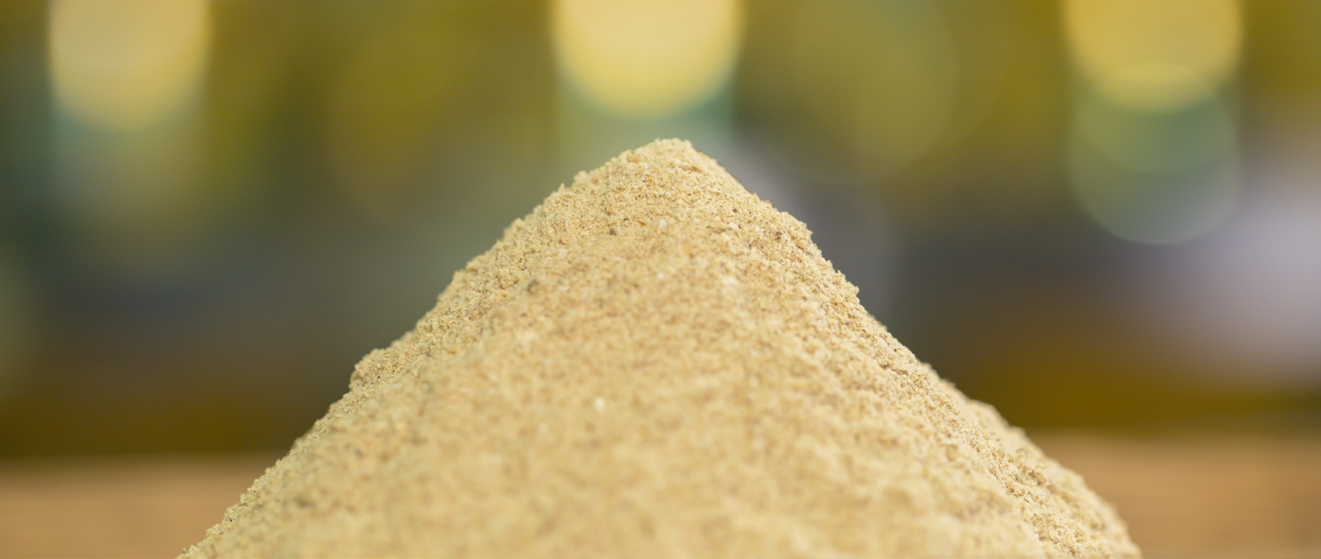
鲜米糠
米糠:一种潜在的食用资源
Rice Bran: a Potential Resource for Human Consumption
米糠是稻谷加工的副产物。稻谷经过脱壳得到糙米。尽管被推荐为健康饮食,但大部分糙米仍然进一步被加工成大米,米糠皮与胚芽则作为米糠(大约占干重的10%)被碾磨掉。米糠包含大量的膳食纤维、蛋白质、油脂和残留淀粉,主要用于饲料原料或油脂提取。如果做好质量控制,全米糠可以用作食用。鉴于米糠中膳食纤维、蛋白质以及脂溶性生物活性成分(例如:谷维素、植物甾醇、生育酚、生育三烯酚等)的高营养价值,稻谷加工行业正在探索这种可能性。不过,米糠中的活性脂肪酶会水解油脂,有可能降低食品质量,给米糠油食用用途的开发利用带来挑战。解决这个问题面临先进技术应用和操作上的困难,需要加强技术和实践创新。
联合国粮农组织2018 年的报告指出,全球稻谷产量约为7.4-7.5 亿公吨,而2000 年稻谷产量约为6 亿公吨。按国家来分,每个国家的稻谷产量情况如下(以百万公吨计):中国(211)、印度(159)、印度尼西亚(77)、孟加拉国(53)、越南(43)、缅甸(26)、泰国(25)、菲律宾(18)、巴西(11)、巴基斯坦(10)、美国(10)、柬埔寨(10)、日本(8)、其他国家(82)。以10%的米糠产量和其中10%-16%的含油量计算,保守估计全球每年米糠油产量应大于750 万公吨。但是,根据非官方提供的评估数据,目前米糠油产量不超过200 万公吨。例如,在中国只有10%-15%的天然米糠油资源被开发,还有大量资源未被用于食品。目前,中国高度依赖进口油脂和植物油料,如何更好地利用本国资源显得尤为重要。在国际贸易受到较大冲击的情况下,提高米糠利用率将有利于保障本国供应链安全。
Rice bran is the by-product of paddy rice milling. The de-husked rice kernel is called brown rice. Although the brown rice is currently recommended for healthy eating, majority is moving on for further processing to produce white rice. The brown skin and rice germ are removed as rice bran (around 10% on dry basis). The rice bran contains primarily fiber, protein, oil, and residual starch. Rice bran is mainly used as feedstuff or as raw material for oil extraction. The whole rice bran can be considered for edible uses if the quality can be controlled.This possibility is currently under exploration in industry due to high healthy values in terms of fiber, protein, and oil soluble bioactive compounds such as oryzanols, phytosterol, tocopherols and tocotrienols,etc. However rice bran contains active lipase that can hydrolyzes the oil in the bran. This leads to the poor quality for uses in food and brings challenges for the rice bran oil processing into edible uses. This is an area facing high technology and operation difficulty and needs intensive technology and operation innovations.
From the FAO report in 2018, global paddy production is around 740-750 million metric tons (MMT), whereas the number is around 600 MMT in 2000. On the country base, the production in each country(production amount in MMT) is listed below: China (211), India (159),Indonesia (77), Bangladesh (53), Vietnam (43), Myanmar (26), Thailand(25), Philippines (18), Brazil (11), Pakistan (10), USA (10), Cambodia(10), Japan (8), and Others (82). With 10% rice bran production and 10%-16% oil based on rice bran, the conservative estimation of rice bran oil globally per year should be more than 7.5 MMT. However,current production of rice bran oil with non-official estimation should be not more than 2 MMT. For example, only 10%-15% of natural resources of rice bran oil has been explored in China. Large volume of resources has been not yet well used for food applications. In particular,China is a country highly relying on importing oils and fats or oilseeds from other countries. The better use of locally available resources is getting important. Even furthermore, when global trade fights are getting face to face, this concern is getting urgent to defend our local supply chain in a safe position.
另一方面,近期越来越多的研究表明,米糠油是自然界中最具营养和功能的油脂之一[1]。提油后的米糠具有现代食品推荐的膳食纤维和蛋白质,可广泛用于食品和其他领域,为更好地利用米糠资源提供了广阔空间。特别是中国当前的情况,由于饮食传统与过度加工,我们正在摄入太多所谓“不好的”碳水化合物。根据最近发表的一篇文章,我们相信,增加米糠的摄入量可以帮助缓解糖尿病[2],使用米糠作为膳食纤维强化剂有可能成为一项有意义的策略。关于米糠的更多食品应用和营养研究正在进行中[1]。
需要关注的是,米糠和米糠油还没有得到消费者和行业的广泛认可。与其它油料作物相比,水稻主要在亚洲种植(超过90%),因此西方国家未对米糠进行过大量研究。即使在亚洲国家,针对米糠的研究仍然相对薄弱和分散,且不同国家的技术和应用有一定差异,各国法规和标准化实践也各不相同。因此,需要加大推进和宣传力度[1]。
2020 年9 月,当谭洪卓女士邀请我为《粮油食品科技》主持特约专栏时,我便构思组织了这一期“米糠:一种潜在的食用资源”专栏,旨在提高公众对米糠的关注。我在丹麦工作时,米糠曾是我的一项研究关注,当时有丹麦-印度的政府联合项目招标,我的印度合作者提出了关于米糠的课题,目的是通过米糠作为食品配料为印度低收入人群提供营养。但在中国情况有所不同,我们希望通过米糠为不同人群特别是富裕人群(糖尿病人群多是能量和营养过剩造成)提供更多膳食纤维,以改善现代健康问题。
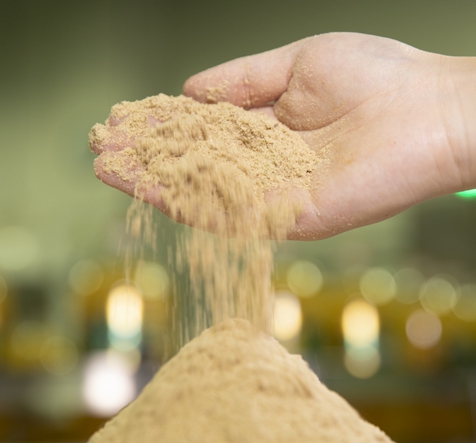
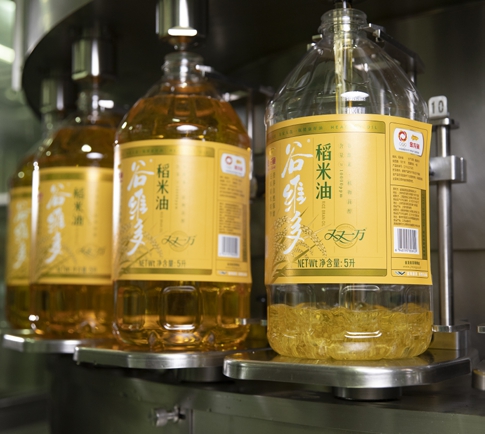
On the other hand, rice bran oil is one of the most nutritious and functional oil in nature. The evidence is more and more demonstrated from current studies [1]. Furthermore, the rice bran after oil extraction has a lot of potential for food and other applications in terms of fibers and proteins in the modern food recommendation criteria. This leaves vast potentiality to utilize the rice bran in a better way. Particularly for the situation in China, we are facing too much so called “bad”carbohydrates intake due to our food tradition with overprocessing in cereal industry. We believe increased intake of rice bran can help release the effect of diabetes on population health. This is just demonstrated in a very recent article [2]. The concern to use rice bran for so called fiber fortification could be an interesting strategy. More food application and nutritional studies are on the way [1].
For the further concern, rice bran and rice bran oil are still not well recognized by majority of consumers and industry consequently.As rice is primarily grown in Asia (more than 90%), the mainstream research efforts in the western world are not widely undertaken compared to many other oil-bearing materials. Even in Asian countries, the efforts are still relatively weak and scattered. Technology and applications vary also from country to country. Regulation and standardized practice are also varied. More promotion and communication are still therefore highly needed and in critical stage [1].
Therefore this special issue is organized when Madam Tan Hongzhuo asked me to co-organize and co-edit a special issue for the journal in September 2020. This is for the effort to raise the rice bran issue again for the public to give more attentions. Rice bran was first into my research work when I worked in Denmark. There was a Denmark-India joint program for application. My Indian partner raised the rice bran subject. We aimed to defend a project on rice bran ingredients to supply nutrition for low income populations in India. In current China, the situation is different. Rather we hope more help for opposite groups of population where more fibers are needed to improve modern health issues.
In this special issue, 5 papers were collected with appreciation to the authors for their supports especially in this pandemic situation globally for the time during the organization of the papers. Drs. Zhang,Xu, Wang, He, and Yang put up a paper on the enzyme-assisted extraction of rice bran oil. The technology received quite a lot of research for many other oils and fats. However, this is quite novel work on rice bran oil extraction. Prof. Zhang is leading a research program on rice bran processing. See more in P1-P10. For the concern of rice bran fiber, Drs. Ma, Yin, Zhang, and Xu made a comprehensive review for the research progress. Hopefully it gives inspiration for readers to work further for more development. Read more in P11-P20. Drs.Singanusong and Jacoby jointly contributed a paper on an overview on nutrition and applications of rice bran oil. Dr. Singanusong leads a center of excellence in Thailand on rice bran oil research for more than a decade while Dr. Jacoby is a senior nutritionist from Wilmar R&D.See more in P21-P29. Drs. Chakrabarti and Jala contributed a paper on processing technology with effort to evaluate the current technology in terms of problems and challenges. The two authors are from the Indian Institute of Chemical Technology, where the center supplied most of technology for Indian rice bran oil industry. Read more in P30-P42.The last but not the least is the paper from Drs. Zhou, Sun, Wang and Jiang on the crystallization and melting behaviors of rice bran oil. The study is very novel to provide the understanding of cooling property of rice bran oil as well as possibilities to control fractionation process. See more in P43-P48.
本期特约专栏共组织了5 篇文章。在全球疫情大流行的特殊日子里,感谢作者们的大力支持。他们分别是:(1)北京工商大学食品与健康学院张敏教授、许朵霞博士、王振华博士,以及硕士研究生郝佳、杨焕月共同撰写了关于酶法辅助提取米糠油的研究论文,这是米糠油提取方面的一项创新工作。虽然这项技术在其他油脂领域已有所研究,但对稻米油还研究很少。张敏教授正在领导一项关于米糠加工的研究项目推进这项工作。文章详见P1-P10。(2)丰益(上海)生物技术研发中心有限公司的马宗会高级工程师、殷宝茹博士、张海博士、徐学兵教授对米糠膳食纤维相关研究进展进行了全面回顾和讨论,希望能给读者带来启发,抛砖引玉,吸引更多科学工作者推动米糠应用,为进一步工作提供帮助。详见P11-P20。(3)泰国那黎宣大学农业、自然资源与环境学院农业工业部Singanusong 博士和丰益(上海)生物技术研发中心有限公司的Jacoby 博士共同撰写了一篇关于米糠油营养和应用的综述。Singanusong 博士负责泰国米糠油卓越研究中心已有十余年,Jacoby 博士是丰益国际研发中心的高级营养师。文章详见P21-P29。(4)印度科学与工业理事会(CSIR)-国家化工研究院脂质科学与技术研究所的Chakrabarti 博士和Jala 博士撰写了一篇关于印度米糠油生产技术的论文,尝试从问题和挑战方面评估当前技术。该研究所为印度油脂工业包括米糠油工业提供了大部分技术,是印度的核心研究机构。阅读详见P30-P42。(5)同样来自丰益(上海)生物技术研发中心有限公司的周帅博士、孙悦硕士、王勇硕士、姜元荣博士对稻米油的结晶熔融行为开展了研究,希望能为提升稻米油产品的抗冻性能和扩展稻米油产品的应用领域奠定一些理论基础。详见P43-P48。
我希望这期“米糠:一种潜在的食用资源”特约专栏对读者有所启发,也希望能吸引更多读者进一步加强米糠的深入研究和应用开发工作。期待在该领域看到更多的成果和市场产品,期待米糠为人类健康特别是中国消费者健康作出更多贡献。
——徐学兵于中国·上海
2021 年6 月19 日
(英译中:马再男)
I hope the collection is interesting for readers and I also hope it attracts more interests from readers for further research and development. Look forward to seeing more work in the field and more products in the market. A big expectation is that rice bran offers more benefits for human health.
—— Xuebing XU at Shanghai, China
June 19, 2021
[1] Ling-Zhi Cheong and Xuebing Xu, Rice Bran and Rice Bran Oil:Chemistry, Processing and Utilization, AOCS Press and Academic Press, London and San Diego, 2019.
[2] Hitomi Kumagai, Yusuke Yamaguchi, and Chiaki Sugimoto, Rice bran as potential antidiabetic food material, INFORM 31 (9), 22-25,2021.
|专栏加盟学者|

北京工商大学食品与健康学院张敏 教授
张敏:北京工商大学食品与健康学院教授、博士生导师。一直从事食品科学与工程领域的科研、教学与管理工作。先后主持多项国家级、省部级、企业横向合作科研项目。建立了杂粮及马铃薯原料加工适应性及产品营养评价体系,开发出杂粮及薯类的面条、冲调粉及营养重组米等产品;通过揭示稻谷加工与米饭风味间的关联机理,用于方便米饭的加工;在米糠综合利用及植物蛋白研究方面,积累了大量研究成果。下图1、图11 为专栏文章一的节选图。

图1 水酶法提取米糠油示意图[14]

图11 破乳前后乳状液微观结构及表观状态

泰国那黎宣大学
农业、自然资源与环境学院农业工业部Riantong Singanusong 博士/助理教授
Riantong Singanusong:博士,泰国那黎宣大学农业、自然资源与环境学院农业工业部助理教授。2014-2020 年期间,任该大学脂肪和油脂卓越中心主任。她是国际米糠油协会(IARBO)创始人之一,2014-2019 年,曾任该协会秘书长。9 年来,她帮助支持组织米糠油国际会议,兼任研究张贴报告、口头报告、行业奖项的评委专家。
Riantong Singanusong博士专业领域为大米及其产品的食品化学分析、产后加工、产品研发等行业,尤其是米糠和米糠油的研究开发提供学术咨询、培训等多项技术服务,同时在学术研究上发表文章、书籍章节及专利等。从事《食品化学》《坚果技术》课程教学20 多年,指导硕士研究生30 余名。
Dr. Riantong Singanusong, is an Assistant Professor in Department of Agro-Industry,Faculty of Agriculture, Natural Resources and Environment, Naresuan University, Thailand. She was a Director of Centre of Excellent in Fats and Oils, Naresuan University during 2014-2020.For the International Association of Rice Bran Oil (IARBO), she was formerly a Secretary-In-General during 2014-2019 but now is a founder member. Her roles were helping in organizing the International Conference on Rice Bran Oil for 9 years, as well as being an assessor for the industrial awards, research posters and oral presentations.
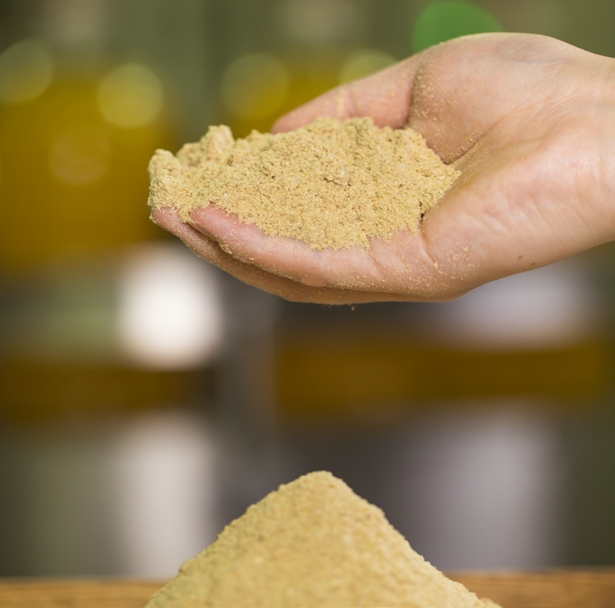
Her areas of expertise are in chemical analysis of foods, post-harvest processing and product development of rice and its products, especially rice bran and rice bran oil. She has been teaching in Food Chemistry and Nut Technology courses for over 20 years and supervising over 30 postgraduate students. Concurrently, she has been conducting research and development on rice bran and rice bran oil, offering academic consultancy and training, and publishing papers,book chapters and patents on rice bran and rice bran oil.

印度科学与工业理事会(CSIR)
国家化工研究院脂质科学与技术研究所Pradosh Prasad Chakrabarti 博士
Pradosh Prasad Chakrabarti:博士,目前是印度科学与工业理事会(CSIR)-国家化学技术研究院脂质科学和技术所(海得拉巴)的高级首席科学家;也是一名受过良好训练的石油技术专家。在印度国家化学技术研究院(孟买)获博士学位;拥有40 多篇出版物和13 项专利,涉及除了膜技术外的米糠油加工、树基油、脂肪加工、油脂化学等领域。
他和同事们开发了环境友好的酶脱胶技术,帮助该行业生产出高质量食用米糠油,印度目前有27 个行业正采用这项技术。还开发了基于膜分离技术处理不同类型工业废水的工艺、油脂和脂肪精炼工业的副产品增值工艺,包括分离保健品的各种工艺等,使他在印度业界同行中很受认可。2012-2015 年,任《脂质科学与技术》杂志编辑。在本期专栏里,他和Ram Chandra Reddy Jala 合作撰写了一篇关于印度米糠油生产技术评价的论文。
Dr. Pradosh Prasad Chakrabarti, is currently working as Senior Principal Scientist at Centre for Lipid Science and Technology, CSIR-Indian Institute of Chemical Technology,Hyderabad. He is an Oil Technologist by training and obtained his Ph. D. (Technology) degree from Institute of Chemical Technology (ICT) , Mumbai. He has more than 40 publications and 13 patents in his credit, ranging from rice bran oil processing, tree based oils and fats processing,oleochemistry, etc. other than membrane technology.
He, along with his colleagues, developed environment-friendly enzymatic degumming technique for rice bran oil that helped the industry to produce very good quality edible rice bran oil. This technology is being practiced by 27 industries in India. He has developed processes based on membrane separation techniques for the treatment of different types of industrial wastewater. He has also developed processes for value addition of by-products of oils and fats refining industries including various processes for isolation of nutraceuticals. He received a list of recognitions in India. He was the Editor of Journal of Lipid Science and Technology from 2012-2015. In this special column, he, together with the other author, Ram Chandra Reddy Jala, wrote the paper on Production of rice bran oil in India: a technical evaluation.
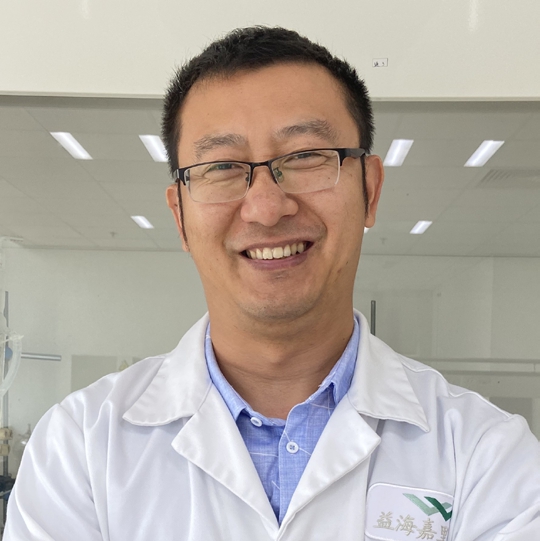
丰益(上海)生物技术研发中心有限公司
马宗会 高级主任工程师
马宗会:2009 年3 月获东华大学有机化学硕士学位,2011 年加入丰益(上海)生物技术研发中心有限公司,担任高级主任工程师,主要从事脂肪替代物、风味油脂开发,微胶囊和制粒技术、美拉德反应和风味肽、油脂加工过程中副产物增值利用及油脂加工产业链中污染物控制与脱除等研究。完成了米糠脱砷技术攻关,为食品级米糠开发利用奠定了基础;参编《Polar Lipids》(AOCS 出版);获“浦东职工科技创新英才”奖;申请专利27 项,授权3 项,PCT 1 项。

脱脂米糠
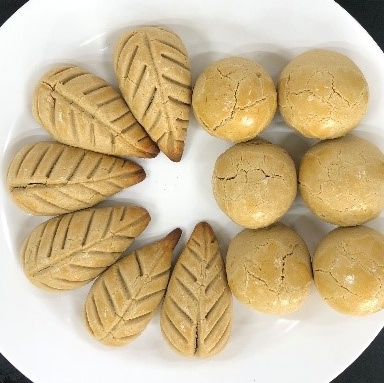
脱脂米糠的食品应用
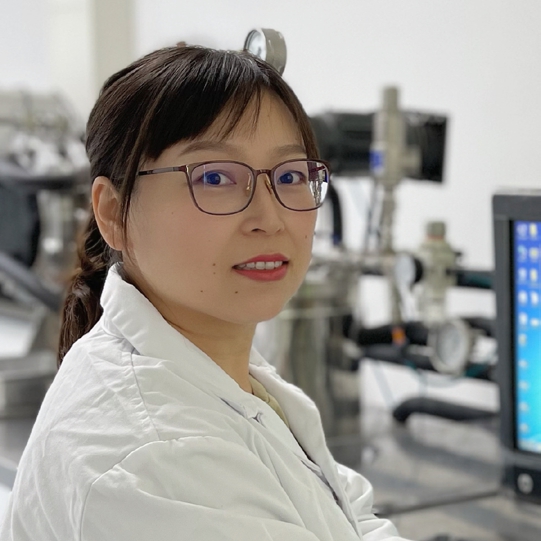
丰益(上海)生物技术研发中心有限公司
周帅 博士
周帅:博士,丰益(上海)生物技术研发中心有限公司高级工程师,上海市青年科技启明星。重点研究聚烯烃结构和食用油脂组成设计、结晶过程调控等。主持国家自然科学基金青年基金等国家级、省部级及企业创新研发项目5 项;作为项目骨干参与各类项目11 项;发表SCI 论文20 余篇;参编中文专著1 部;申请发明专利7 项。下图1、图6 为专栏文章五的节选图。
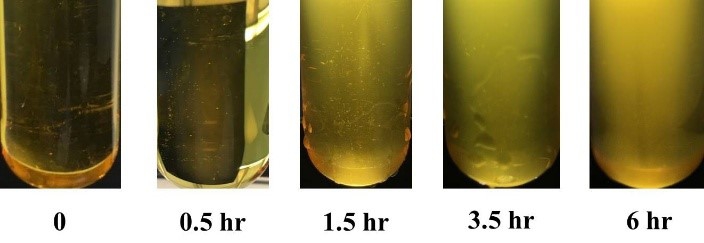
图1 稻米油0 ℃冷冻试验

图6 稻米油在4 ℃条件下储藏90 天 (a)及常温25 ℃化冻8 hr (b)
专栏邀请与策划:谭洪卓 专栏文章组稿:徐学兵 文章审核:徐学兵、伍松陵、谭洪卓
编辑校对:尤梦晨、李思源 协助:黄土兰 摄影:汪流周(鲜糠、稻米油)
PC5-C14 排版:郭洪丽
2021 年8 月
